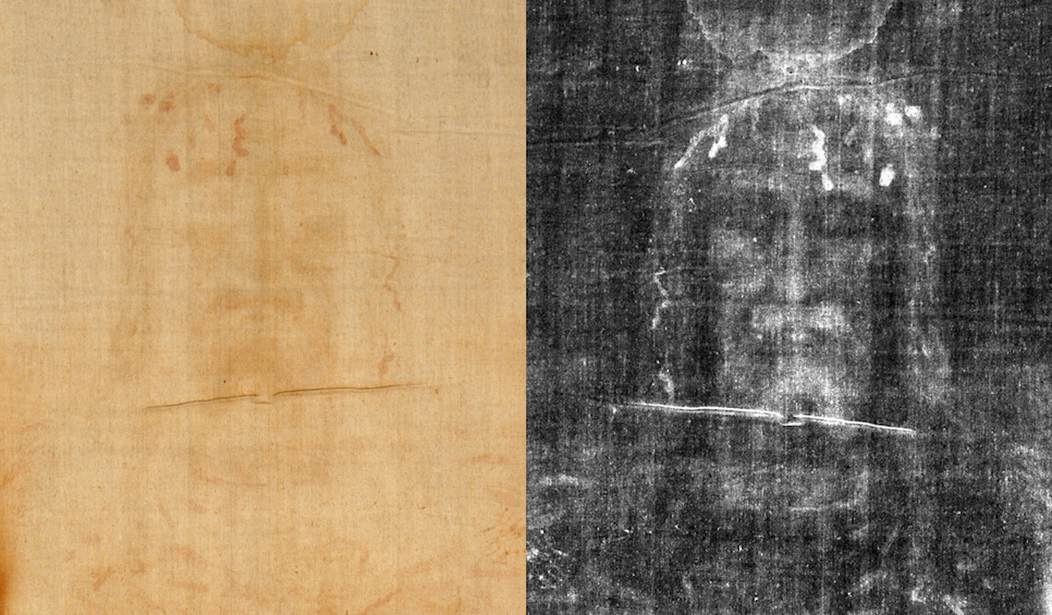Author's Note: All previous volumes of this series are here. The first 56 volumes are compiled into the book "Bible Study For Those Who Don't Read The Bible." "Part Two," featuring volumes 57-113, was published in December 2022.
Thanks for joining our study. Today, we discuss one of my favorite verses with a question that Jesus asks His disciples: “Who do you say I am?” So important is this question that it appears in three of the four gospels: Matthew 16:13-16, Mark 8:27-29, and Luke 9:18-20. Let’s open our Bibles to Matthew’s version:
“When Jesus came to the region of Caesarea Philippi, he asked his disciples, ‘Who do people say the Son of Man is?’ They replied, ‘Some say John the Baptist; others say Elijah; and still others, Jeremiah or one of the prophets.’ ‘But what about you?’ he asked. ‘Who do you say I am?’ Simon Peter answered, ‘You are the Messiah, the Son of the living God’ ” Matthew 16:13-16.
Mark’s gospel:
“Jesus and his disciples went on to the villages around Caesarea Philippi. On the way he asked them, ‘Who do people say I am?’ They replied, ‘Some say John the Baptist; others say Elijah; and still others, one of the prophets.’ ‘But what about you?’ he asked. ‘Who do you say I am?’ Peter answered, ‘You are the Messiah’ ” (Mark 8:27-29.)
Luke’s gospel:
“Once, when Jesus was praying in private, and his disciples were with him, he asked them, ‘Who do the crowds say I am?’ They replied, ‘Some say John the Baptist; others say Elijah; and still others, that one of the prophets of long ago has come back to life.’ ‘But what about you?’ he asked. ‘Who do you say I am?’ Peter answered, ‘God’s Messiah’ ” (Luke 9:18-20).
Recommended
As you can see, slight variations exist among the three gospels, but the wording of the all-important question does not change. When Jesus asked, “Who do you say I am?” the question contained the answer with two powerful words —“I am” — the key to His identity. In Vol. 21, the meaning of “I Am” is discussed in detail but worthy of a brief refresher. In Exodus, Moses asked for clarification about God’s identity:
“God said to Moses, ‘I am who I am. This is what you are to say to the Israelites: ‘I am has sent me to you’ ” (Exodus 3:13-14).
Therefore, the disciples knew the meaning of “I am.” Then, in John’s gospel, when Jesus was teaching in the temple courts, He blew the minds of “the teachers of the law and Pharisees” and guaranteed they would accuse Him of blasphemy when He said:
“ ‘Your father Abraham rejoiced at the thought of seeing my day; he saw it and was glad.’ ‘You are not yet fifty years old,’ they [Pharisees] said to him, ‘and you have seen Abraham!’ ‘Very truly I tell you,’ Jesus answered, ‘before Abraham was born, I am!’ ” (John 8:48-59). (For context, read the entire passage.)
In addition to that revealing teaching, Jesus said “I Am” several times in John’s gospel:
I Am the Bread of Life (John 6:35).
I Am the Light of the World (John 8:12).
I Am the Door of the Sheep (John 10:7).
I Am the Good Shepherd (John 10:11).
I Am the Resurrection and the Life (John 11:25).
I Am the Way, the Truth and the Life (John 14:6).
I Am the True Vine (John 15:1).
With every “I Am,” Jesus reinforced His divinity to the crowds, His disciples, and the Jewish leaders who listened to or heard about His teaching.
Circling back to today’s three gospel passages, Jesus did not need to ask His disciples who the “people” or the “crowds” thought He was. Jesus was most interested in who the disciples believed He was since they were the men He had chosen to establish his church and spread His teachings “to the ends of the earth.”
Therefore, when Jesus asked Peter, “Who do you say I am,” and Peter said:
“You are the Messiah, the Son of the living God,” Jesus replied:
“ ‘Blessed are you, Simon son of Jonah, for this was not revealed to you by flesh and blood, but by my Father in heaven. And I tell you that you are Peter, and on this rock I will build my church, and the gates of Hades will not overcome it. I will give you the keys of the kingdom of heaven; whatever you bind on earth will be bound in heaven, and whatever you loose on earth will be loosed in heaven ’ ” (Matthew 16:17-19).
In that passage, Jesus proclaimed Peter to build/lead the church, and by tradition, Catholics consider Peter the “first pope.”
Now, imagine Jesus standing before you asking, ‘Who do you say I am?” Speak your answer aloud. If unsure, seek a faith leader who can help you arrive at Peter’s answer, “You are the Messiah, the Son of the living God.” I believe that is The Truth, as is “I Am the Way, the Truth, and the Life. No one comes to the Father except through me” (John 14:6).
Finally, here is why “Who do you say I am?” is among my favorite verses. My bio below mentions I am Executive Director of the National Shroud of Turin Exhibit. Our goal is to produce a permanent high-tech Shroud exhibit in Washington, D.C.
The question Jesus asked Peter is frequently captioned with the “Holy Face” of the Man who appears on the Shroud of Turin. If you are unfamiliar with it, the Shroud is a 14-foot linen cloth that shows an unexplainable front-to-back full-body image of a crucified man that, for centuries, millions of people around the globe have believed is the cloth that wrapped Jesus in the tomb.
However, that “Holy Face” is NOT the face one sees with the naked eye on the faint yellowish-colored Shroud of Turin. The reason is that in 1898 — when the Shroud was first photographed using film — the image was reversed. What mysteriously developed was a black-and-white “positive image” of the man’s brutalized body and face.
Since 1898, that hauntingly beautiful face became known as the “Holy Face.” Subsequently, the discovery of the “positive image” posed a challenge to skeptics who doubted the Shroud’s authenticity and gave new meaning to Jesus’s question, “Who do you say I am?”
Today, the Shroud is the world’s most studied artifact and among its greatest mysteries. Still unanswered is how the man’s image was formed on the cloth, the black/white photographic mystery, and countless other unexplained phenomena, making “Who do you say I am?” as relevant today as when Jesus asked Peter.
Myra Kahn Adams is a conservative political and religious writer with numerous national credits. Her book, "Bible Study For Those Who Don't Read The Bible," reprints the first 56 volumes of this popular study. "Part 2,” with the same title, reprints Vols. 57-113. Order it here.
Myra is also Executive Director of SignFromGod.org and the National Shroud of Turin Exhibit. Both are educational donor-supported ministries dedicated to building a permanent Shroud of Turin exhibit in Washington, D.C. Visit the life-sized Shroud replica in D.C. Contact: MyraAdams01@gmail.com.

























Join the conversation as a VIP Member